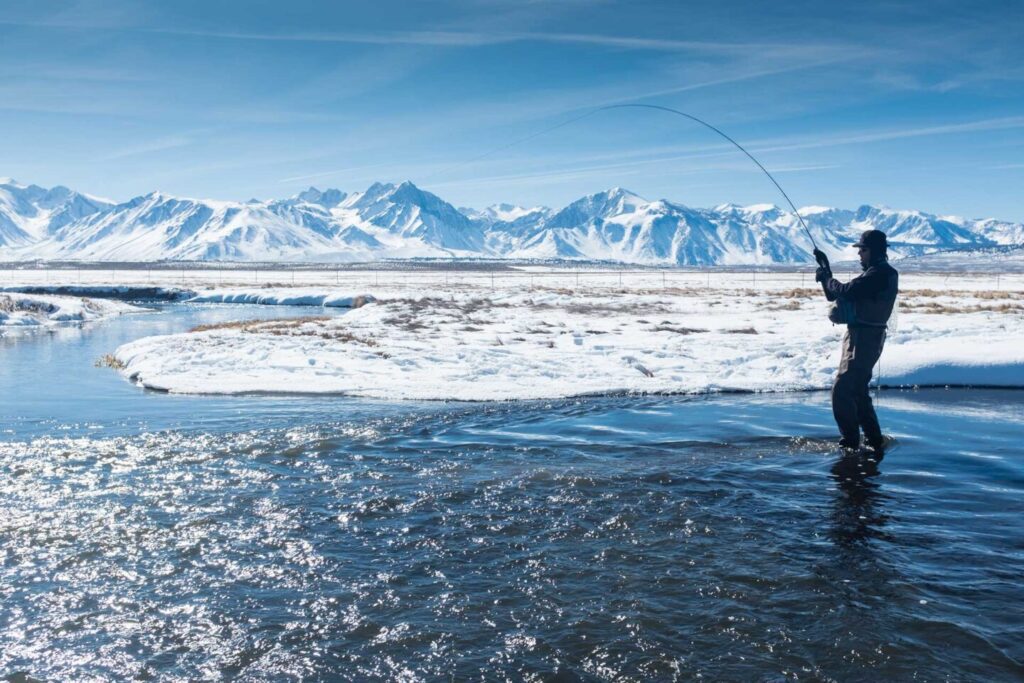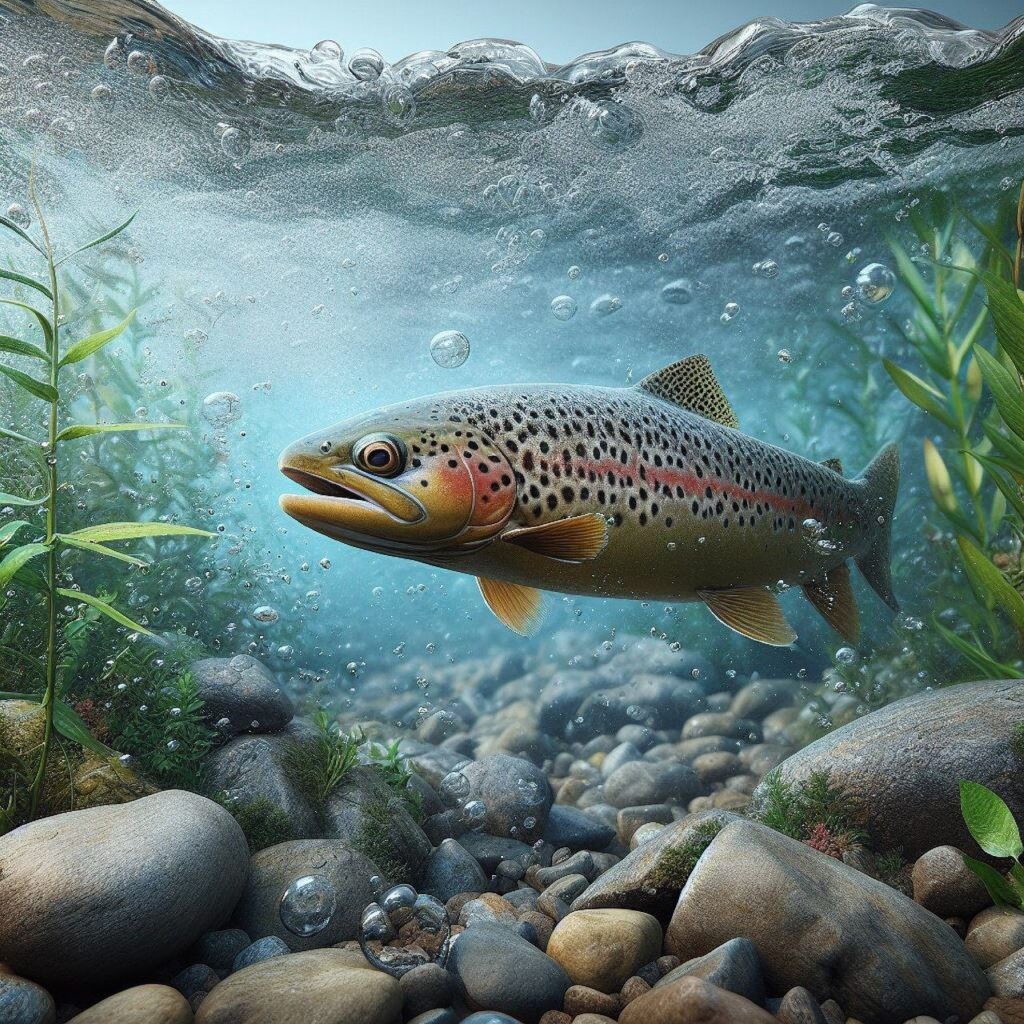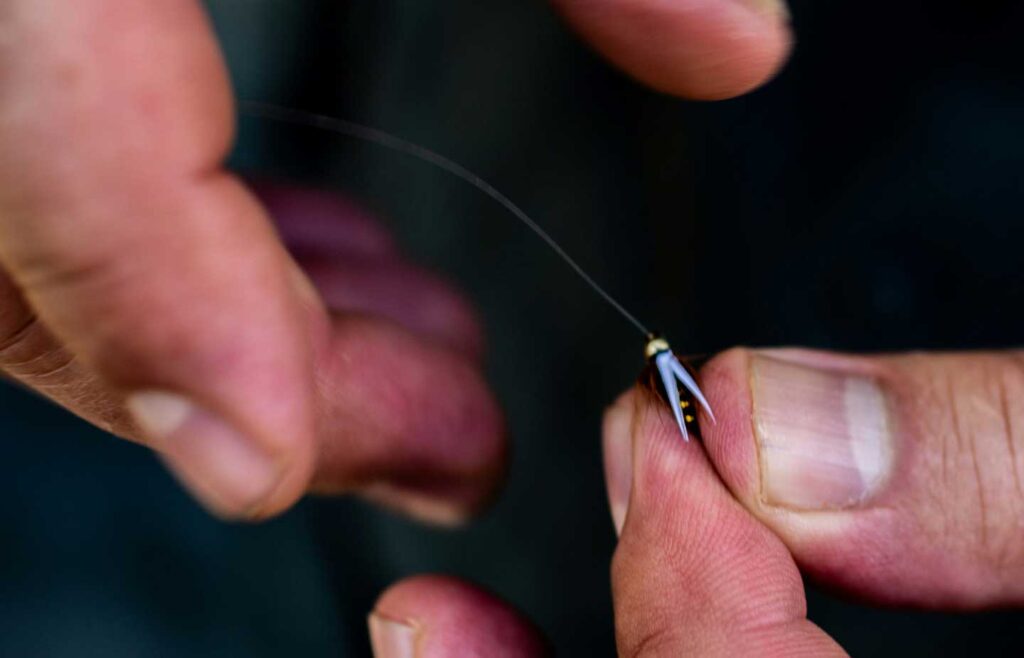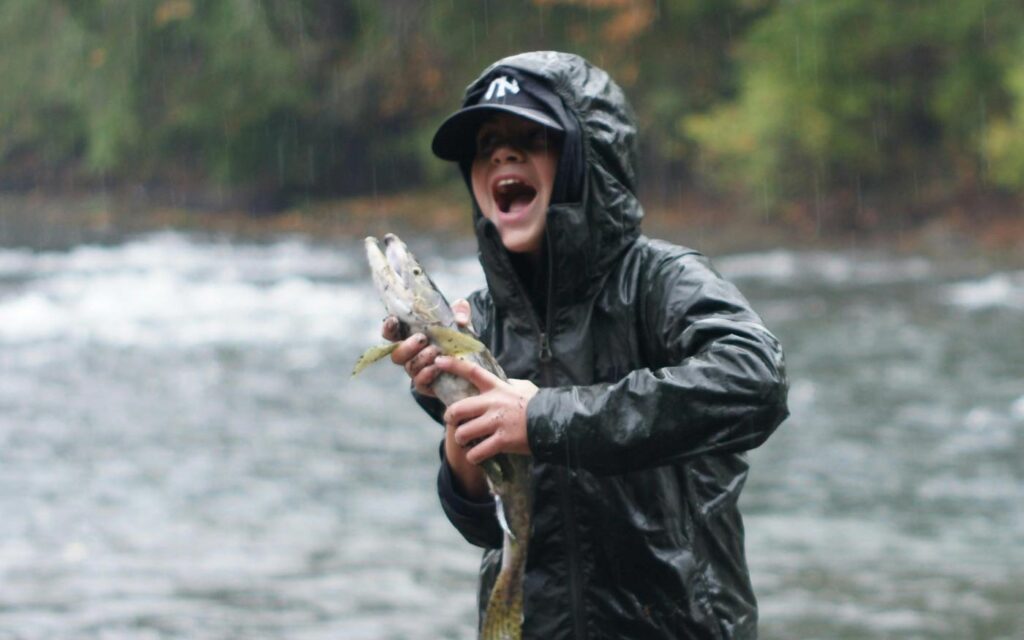
Winter fly fishing is a one-of-a-kind adventure that brings anglers into nature’s winter wonderland. When the temperatures drop, and the snow blankets the landscape, fly fishing takes on a peaceful and quiet atmosphere. The air is crisp, the surroundings are calm, and the world seems to slow down. It’s an experience that goes beyond catching fish—it’s about embracing the beauty and serenity of the season.
While winter fishing can be more challenging due to colder water temperatures and slower fish activity, it’s still possible to catch fish. Species like trout and steelhead continue to feed and remain active, though their behavior changes with the time of year. The slower pace of winter fishing allows you to pay closer attention to the natural world around you and truly appreciate the finer details that come with this season.
Whether you’re a seasoned fly fisher or a beginner, fly fishing offers a rewarding experience. With the right preparation and techniques, winter can become your favorite time to fish. This guide will walk you through everything you need to know to get the most out of your fly fishing adventures.
Preparing for Fly Fishing in the Winter
Preparation is key to making the most of your fly fishing trip. The first step is to do some research about the river or stream you plan to fish. Trout streams, for example, are ideal places to target during the winter months. Look for deeper water and slow-moving currents, as fish tend to gather in these areas where the water is less turbulent and temperatures are more stable. You can also check local fishing reports and talk to other anglers to find out where the fish are biting.
You’ll also want to make sure your gear is ready for winter conditions. Fly rods, reels, and lines should all be in good working order. Be sure to inspect your waders for any leaks, as you don’t want to get wet in cold conditions. Boots with good traction are essential for walking on icy banks and slippery rocks.
When dressing for fly fishing, layering is key. Start with a moisture-wicking base layer to keep sweat away from your skin, then add an insulating layer to retain heat, and finish with a waterproof outer layer to protect yourself from wind and water. Gloves, hats, and extra warm clothing are also essential to stay comfortable while fishing.
Safety and Conservation
Fly fishing in the winter can be a truly magical experience, offering serene landscapes and a peaceful connection with nature, but it also demands heightened caution. The cold weather significantly increases the risk of hypothermia and frostbite, making it essential to dress in layers, wear insulated and waterproof gear, and take frequent breaks to stay warm. Always be aware of the early warning signs of hypothermia, such as persistent shivering, confusion, or numbness in your fingers and toes. If you encounter any of these symptoms, prioritize finding shelter and warming up immediately to protect yourself from serious health risks.
Safety should also extend to navigating icy or slippery terrain along the riverbank. Use cleated boots or ice traction devices to maintain stability and prevent accidents. Bringing a friend along or informing someone of your plans can add an extra layer of security. Additionally, carrying a first-aid kit, extra clothing, and a thermos filled with a hot beverage can make all the difference in an emergency.
Conservation plays an equally critical role in ensuring the sustainability of our natural ecosystems. During the winter months, fish such as trout enter a period of slowed metabolism, making them more vulnerable to stress. To minimize impact, practice responsible catch-and-release techniques by using barbless hooks and keeping your time handling fish to a minimum. Wet your hands before touching them to avoid damaging their protective slime coating, which acts as a barrier against infections and diseases. Avoid fishing in areas where spawning beds, also known as redds, are present, as disturbing these sites can negatively affect future fish populations.
Furthermore, being mindful of the environment means leaving no trace of your presence. Pack out all trash, even small items like fishing line or snack wrappers, which can pose threats to wildlife. Respect the delicate balance of nature by preserving the beauty and health of the riverbank for others to enjoy. By combining safety measures with conservation efforts, you can fully appreciate the wonders of winter fly fishing while protecting both yourself and the environment.
Understanding Fish Behavior in Winter

Fish are generally less active in cold water, so you’ll need to adjust your fishing techniques accordingly. During the colder months, fish such as trout tend to gather in deeper, slower-moving water where they can conserve energy. These areas often include deep pools or runs near the bottom of a river or lake. Targeting these specific spots is essential for increasing your chances of success. One of the keys to winter fishing is to fish slowly and methodically, mimicking the natural movement and behavior of the food sources available to fish during this time of year, such as insects or smaller fish.
Winter trout are sluggish and far less likely to expend energy chasing fast-moving prey. To improve your chances, it’s crucial to fish with slow, deliberate movements and choose lures or flies that imitate the winter diet of trout. Patterns with natural, muted colors are often more effective during this season. Additionally, fish are typically most active during the warmest parts of the day, which is usually in the middle to late afternoon when the sun has had time to warm the water slightly. If you’re planning a fishing trip, aim for these warmer periods as they tend to provide the best conditions for catching fish.
Finally, don’t overlook the importance of patience and persistence. Winter fishing requires a different mindset—fewer bites don’t necessarily mean failure. With the right approach and preparation, the experience can be incredibly rewarding and offer a unique perspective on nature’s winter beauty.
Techniques for Fly Fishing in the Winter
fly fishing requires a more patient approach, as fish are less likely to chase fast-moving flies. Here are some of the most effective techniques to use during the winter months.
1. Nymphing:
One of the most successful fly fishing techniques is nymphing. This method uses small, weighted flies that sink to the bottom of the river where fish are more likely to be feeding. Using a strike indicator helps detect subtle bites, and it’s essential to keep your line tight to feel for any movement. Common nymph patterns include the stonefly nymph and the zebra midge, which are known for being productive during the colder months.
2. Slow Stripping:
For slightly more active fish, slow stripping is an effective technique. This involves slowly retrieving your fly in a way that imitates a struggling baitfish. You can use streamer patterns or other baitfish imitations for this technique. By varying your stripping speed, you’ll be able to find a rhythm that works for the fish on the river that day.
3. Dead Drifting:
Dead drifting is another technique to use when the fish are slow-moving. In this technique, you let your fly drift naturally with the current, simulating the movement of insects or other prey. You’ll need a long leader and light tippet to achieve a natural drift, and this technique requires patience as you wait for a bite.
Choosing the Right Flies

Choosing the right flies is especially important in winter when fish are more selective about what they eat. Here are a few flies that are great choices during winter:
1. Midges:
Midges are small, delicate insects that are active year-round, even during the coldest months. They are a reliable option for fly fishing, and you can find them in sizes ranging from size 20 to size 18. Midge patterns come in various colors and are great for imitating these tiny insects.
2. Streamers:
Streamers are used to mimic baitfish or other larger prey that trout are likely to feed on in deeper water during the winter. A well-presented streamer pattern can trigger a trout’s natural predatory instincts. Use natural colors for these flies, as they are more likely to mimic the real prey that fish are targeting during the colder months.
3. Nymphs:
As mentioned earlier, nymphs are a great choice during winter because many fish feed on insects that are moving along the bottom of the river. Small, weighted nymph patterns such as the stonefly nymph are particularly effective in colder water conditions. Be sure to adjust your presentation to mimic the movement of these underwater insects.
4. Dry Flies:
While dry flies are generally more effective in warmer months when fish are actively rising to the surface, you may still find success with dry flies like the blue winged olive. If you spot trout rising to take insects from the surface, don’t hesitate to try your luck with a well-presented dry fly. However, be prepared for slow action since trout are less likely to aggressively rise in colder water.

Conclusion
Fly fishing in the winter is a unique and rewarding experience that offers both challenges and rewards. Whether you’re fishing in trout streams, targeting winter trout, or simply enjoying the peaceful atmosphere, winter fishing can be one of the most fulfilling times of the year. With the right preparation, gear, and techniques—such as using size 20 midges, stonefly nymphs, and streamers—you can have a successful fishing trip in even the coldest months. Embrace the beauty of winter, practice patience, and enjoy the serenity of being out on the water during this quiet season. Happy fishing.
More then fly fishing
Big Fish Tackle
